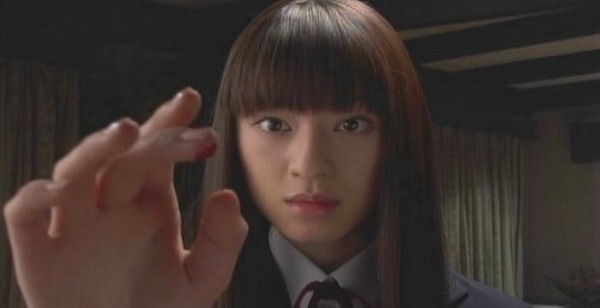

J-Horror Science and Superstition
“One who kills, however, falls into Hell . . .” (Eihi Shiina, “Sky High”)


“One who kills, however, falls into Hell . . .” (Eihi Shiina, “Sky High”)
Somewhat more traditional horror themes have involved further instances of the breakdown of normal personal boundaries, perhaps suggesting the prominence of concern with social definitions of role and adjustment. In Toshiyuki Mizutani’s “Isola: Tajuu jinkaku shôjo” (“Isola: Multiple Personality Girl,” 2000), one of a girl’s multiple personalities’ murderous impulses are caused by scientific experimentation and must be confronted by a female protagonist with psychic powers. The psychic powers of “Junko” (Akiko Yada) in Shusuke Kaneko’s “Kurosufaia” (“Pyrokenesis,” 2000) both redress injustice but also fatally estrange her from others. Kiyoshi Kurosawa’s “Korei” (“Séance,” 2000) puts supposed female intuition into lethal collaboration with personal ambition. Science fiction elements involving genetics, computers and re-animation are present in titles such as Miike’s “Andromedeia” (1998) and Masayuki Ochiai’s “Parasaito Ivu” (“Parasite Eve,” 1997) in which a scientist’s attempt to revive his deceased wife unleashes a beautiful but monstrous female incarnation embodying mitochondrial DNA. Ghosts and uncanny places supply suspense in titles such as Norio Tsuruta’s “Kakashi” (“Scarecrow”, 2001) that stars Maho Nonami, Grace Yip and Kou Shibasaki, and Shunichi Nagasaki’s “Shikoku” (1999) starring Yui Natsukawa (“Gonin 2”) and Chiaki Kuriyama in a film whose title could represent a word play on “land of the dead.” Both these narratives revisit the familiar horror theme of tension that results from the visits of outsiders to remote rural communities. Chiaki Kuriyama also plays a ghost in Iwao Takahashi’s “Mail” (2004), albeit as a positive and supportive presence.

